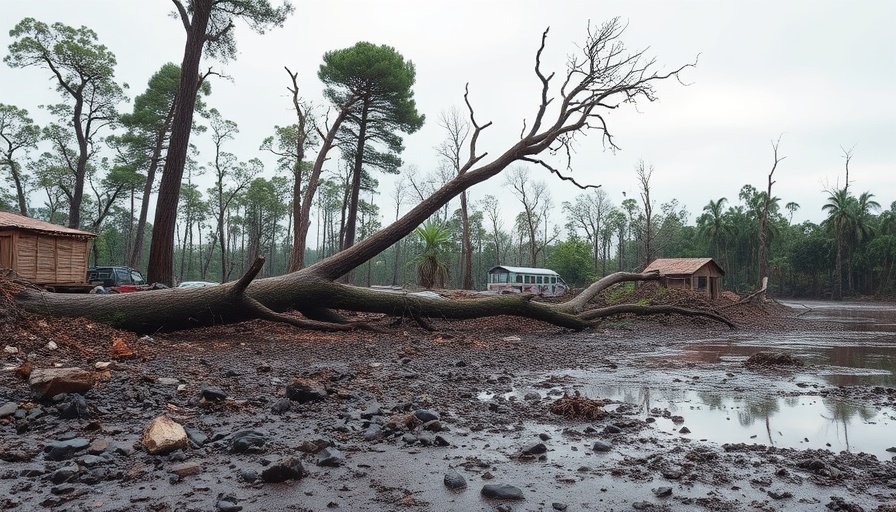
Intense Rainfall: A National Concern
Recently, Texas has faced unprecedented rain events that left communities devastated and inundated with water. With over 12 inches of rain falling in mere hours in Texas Hill Country, the impact of such intense downpours is irreversible. Unfortunately, these are not isolated incidents—many areas across the United States are experiencing similar chaotic weather patterns, suggesting a broader climate concern beyond local borders.
Understanding the Climate Connection
Climate scientists assert that a combination of a warming atmosphere and increased ocean temperatures due to fossil fuel burning create conditions likely to generate catastrophic storms. Experts explain that for every degree Celsius increase in temperature, the atmosphere can retain approximately 7% more moisture. This dynamic is evident in the storms that have recently swept through regions like North Carolina, leading to extensive flooding and loss of life.
The recent flooding events, driven by residual moisture from storms like Tropical Storm Chantal and Hurricane Flossie, caused multiple water rescues and severe property damage. Just last year, Hurricane Helene wreaked havoc in North Carolina, causing monumental flooding that caused the tragic loss of over 100 lives.
The Role of Geography and Weather
Geographically, the hilly terrain in North Carolina and Kentucky contributes to the severity of flooding. As precipitation falls, it runs off rapidly into valleys, exacerbating flood conditions. Furthermore, Texas's recent drought years have led to a lack of vegetation that typically aids in absorbing rainwater, which in turn enables faster flooding.
Future Predictions: Preparing for the Unpredictable
While experts can identify trends indicating a rise in extreme weather events, predicting the precise location and intensity remains elusive. Climate modeling suggests that the frequency of these catastrophic storms will continue to rise, making it critical for communities to prepare for unexpected flooding events even in regions that might have been historically less affected. Local governments must invest in emergency preparedness measures and infrastructure improvements, ensuring that communities have the resources needed to endure heavy downpours.
Impact on Communities and Lives
The emotional toll of these intense downpours cannot be understated. Communities are left dealing with the aftermath of lost homes, disrupted lives, and the constant threat of future storms. Families are seeking shelter, looking for ways to rebuild, and adjusting to the reality of a changing climate that introduces unpredictability into their lives.
What Can You Do?
As individuals, understanding the increasing likelihood of severe weather events is crucial. Awareness can lead to community engagement and preparedness. Local organizations can initiate workshops on what to do before, during, and after major storms. Additionally, individuals can advocate for environmental policies that address climate change, supporting initiatives aimed at reducing greenhouse gas emissions.
Flooding episodes serve as urgent reminders of the immediate need for climate action. By cultivating knowledge and resilience, communities can mitigate damage and withstand the ever-changing nature of weather patterns triggered by global warming.
For those affected by flooding, local governments and NGOs often provide resources to assist in recovery. Supporting these initiatives is not just a local responsibility; it is a communal obligation to ensure everyone has a pathway back to stability.
 Add Element
Add Element  Add Row
Add Row 



 Add Row
Add Row  Add
Add 


Write A Comment